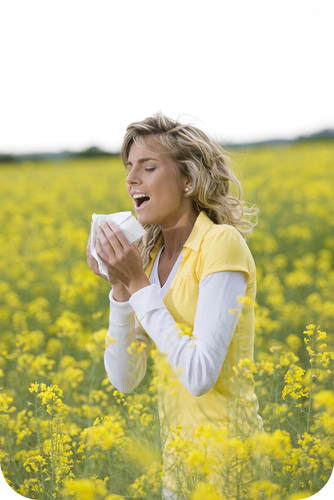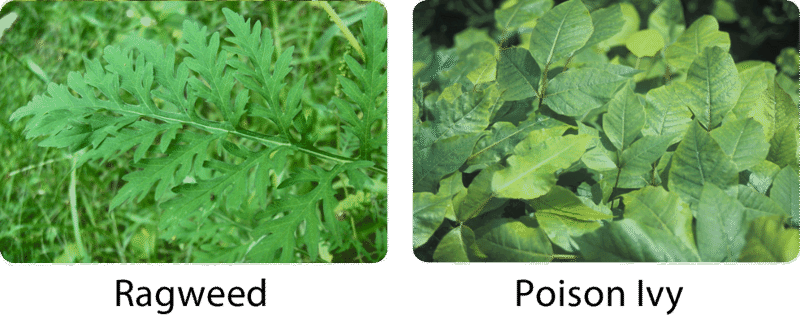13.46: Allergies
- Page ID
- 13322

Have you ever started to sneeze and not known why?
A beautiful sea of flowers. A nice sight, unless you have an allergic reaction. It is not uncommon to have reactions to pollen.
Allergies
Your immune system usually protects you from pathogens and keeps you well. However, like any other body system, the immune system itself can develop problems. Sometimes it responds to harmless foreign substances as though they were pathogens. Sometimes it attacks the body’s own cells. Certain diseases can also attack and damage the immune system and interfere with its ability to defend the body.
An allergy is a disease in which the immune system makes an inflammatory response to a harmless antigen. Any antigen that causes an allergy is called an allergen. Allergens may be inhaled or ingested, or they may come into contact with the skin. Two common causes of allergies are shown in Figure below. Inhaling ragweed pollen may cause coughing and sneezing. Skin contact with oils in poison ivy may cause an itchy rash. Other common causes of allergies include dust mites, mold, animal dander, insect stings, latex, and certain food and medications. Symptoms of a common allergy such as pollen can include sneezing, a runny nose, nasal congestion and itchy, watery eyes.
 Ragweed and poison ivy are common causes of allergies. Are you allergic to these plants?
Ragweed and poison ivy are common causes of allergies. Are you allergic to these plants?The symptoms of allergies can range from mild to severe. Mild allergy symptoms are often treated with antihistamines. These are drugs that reduce or eliminate the effects of the histamines that cause allergy symptoms. Recall that histamines trigger the inflammatory response. The most severe allergic reaction is called anaphylaxis. This is a life-threatening response caused by a massive release of histamines. It requires emergency medical treatment.
Summary
- Allergies occur when the immune system makes an inflammatory response to a harmless antigen.
- An antigen that causes an allergy is called an allergen.
Review
- What is an allergen? Give two examples.
- Define anaphylaxis. What causes the symptoms of anaphylaxis?
- Sometimes people with an allergy get allergy shots. They are injected with tiny amounts of the allergen that triggers the allergic reaction. The shots are repeated at regular intervals, and the amount of allergen that is injected each time gradually increases. How do you think this might help an allergy? Do you think this approach just treats allergy symptoms or might it cure the allergy?
| Image | Reference | Attributions |
 |
[Figure 1] | Credit: Ragweed: Homer Edward Price; Poison ivy: John J. Mosesso/National Biological Information Infrastructure Source: Ragweed: http://www.flickr.com/photos/28340342@N08/2976017730/ ; Poison ivy: life.nbii.gov/dml/mediadetail.do?id=703& ; pt=l2Search& ; navbar=page1_view1_title_asc_15 License: CC BY-NC |
 |
[Figure 2] | Credit: Ragweed: Homer Edward Price; Poison ivy: John J. Mosesso/National Biological Information Infrastructure Source: Ragweed: http://www.flickr.com/photos/28340342@N08/2976017730/ ; Poison ivy: life.nbii.gov/dml/mediadetail.do?id=703& ; pt=l2Search& ; navbar=page1_view1_title_asc_15 License: (Ragweed) CC BY 2.0; (Poison ivy) Public Domain |

